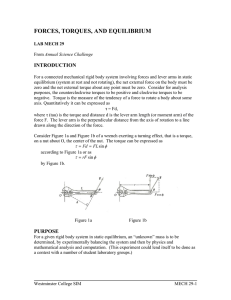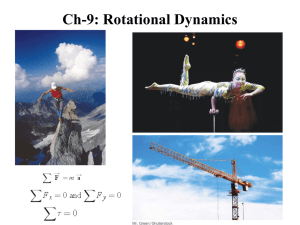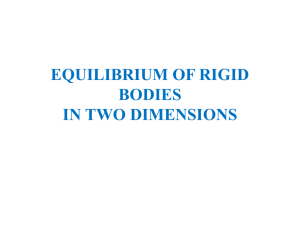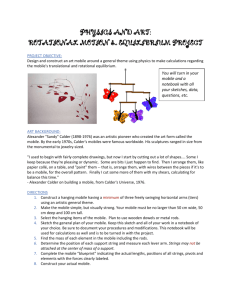Equilibrium of a Rigid Body
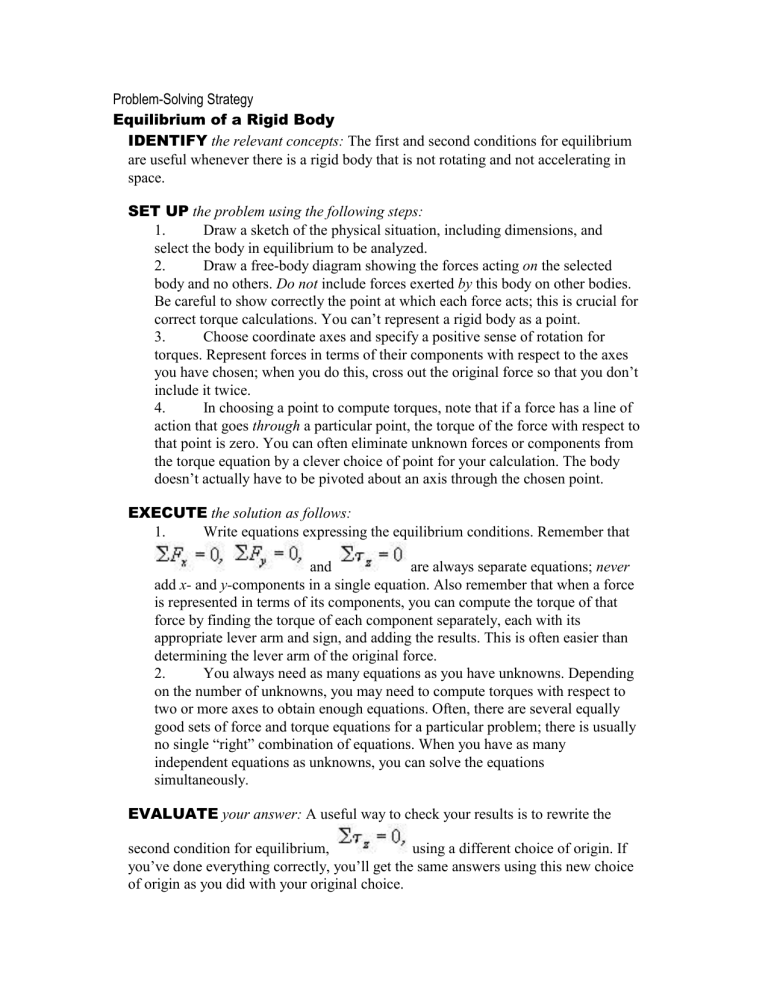
Problem-Solving Strategy
Equilibrium of a Rigid Body
IDENTIFY the relevant concepts: The first and second conditions for equilibrium are useful whenever there is a rigid body that is not rotating and not accelerating in space.
SET UP the problem using the following steps:
1. Draw a sketch of the physical situation, including dimensions, and select the body in equilibrium to be analyzed.
2. Draw a free-body diagram showing the forces acting on the selected body and no others. Do not include forces exerted by this body on other bodies.
Be careful to show correctly the point at which each force acts; this is crucial for correct torque calculations. You can’t represent a rigid body as a point.
3. Choose coordinate axes and specify a positive sense of rotation for torques. Represent forces in terms of their components with respect to the axes you have chosen; when you do this, cross out the original force so that you don’t include it twice.
4. In choosing a point to compute torques, note that if a force has a line of action that goes through a particular point, the torque of the force with respect to that point is zero. You can often eliminate unknown forces or components from the torque equation by a clever choice of point for your calculation. The body doesn’t actually have to be pivoted about an axis through the chosen point.
EXECUTE the solution as follows:
1. Write equations expressing the equilibrium conditions. Remember that
and are always separate equations; never add x and ycomponents in a single equation. Also remember that when a force is represented in terms of its components, you can compute the torque of that force by finding the torque of each component separately, each with its appropriate lever arm and sign, and adding the results. This is often easier than determining the lever arm of the original force.
2. You always need as many equations as you have unknowns. Depending on the number of unknowns, you may need to compute torques with respect to two or more axes to obtain enough equations. Often, there are several equally good sets of force and torque equations for a particular problem; there is usually no single “right” combination of equations. When you have as many independent equations as unknowns, you can solve the equations simultaneously.
EVALUATE your answer: A useful way to check your results is to rewrite the second condition for equilibrium, using a different choice of origin. If you’ve done everything correctly, you’ll get the same answers using this new choice of origin as you did with your original choice.




